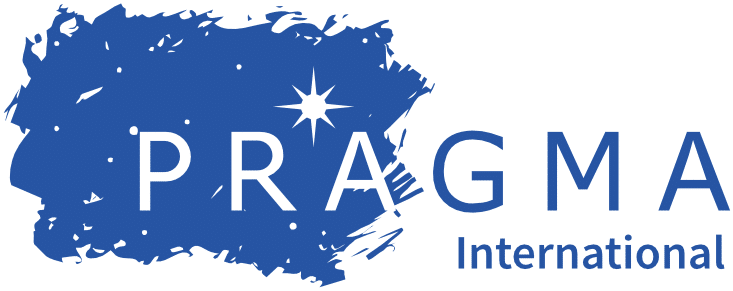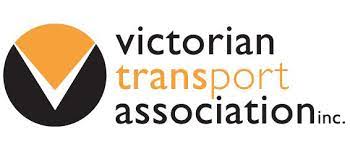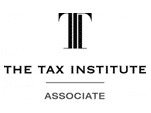We find ourselves in the yoyo of “snap” and extended lockdowns across the county, and managing the risks to worker mental health in both an employment and OHS laws context is real and prevalent for businesses during this pandemic.
Recent announcements from safety regulators make it clear that we can expect to see focused inquiry into business’ psychological risk management. In May 2021, SafeWork NSW released the Code of Practice for Managing psychological hazards at work as guidance for duty holders on the process to identify and manage psychosocial hazards at work. Victoria is proposing changes to its OHS Regulations in this area as explained below.
We recently released a separate COVID-19 vaccination special edition update on the factors to be mindful of when considering whether to mandate the vaccine in your workplace and is available here.
As always, we’re keen to provide you with information that is most relevant and useful to you, so if there is a topic you want us to cover or a special addition update suggestion – give us a holler!
INFRINGEMENT NOTICE PENALTIES IN THE VIC OHS REGS
The Occupational Health and Safety Amendment (Infringements and Miscellaneous Matters) Regulations 2021 (Vic) commenced on 31 July 2021 and gives WorkSafe Inspectors the power to issue infringement notices for fines for 54 prescribed offences under the Victorian Occupational Health and Safety Act 2004 (OHS Act) and Regulations. The full list of prescribed offences for which an infringement notice can be issued is available here.
The infringement penalties are fixed with the highest penalty currently being $1,817.40 for corporations and $363.48 for individuals. This amending legislation does not introduce any new offences.
Whilst a WorkSafe Inspector can issue an infringement notice for any of the prescribed offences, they are not bound to do so and can draw on other compliance and enforcement measures for breaches of the OHS Act and Regulations. This has led to some discussion as to what circumstances an Inspector may issue an infringement notice, rather than refer the matter for prosecution. The answer unfortunately is that there’s no certainty and the enforcement measure is a matter for the Inspector at the time of inquiry.
OHS ACT AMENDMENTS ON THE WAY
On 22 June 2021, the Victorian government introduced into parliament the Occupational Health and Safety and Other Legislation Amendment Bill 2021 (the Bill), to strengthen workplace laws in Victoria and specifically to amend the OHS Act, the Dangerous Goods Act 1985, the Equipment (Public Safety) Act 1994 and the Workplace Injury Rehabilitation and Compensation Act 2013. The Bill has now passed the Legislative Assembly, and if it passes the Legislative Council, it will commence the day after it receives Royal Assent.
The proposed changes that affect OHS laws are outlined below.
Protection of labour hire workers
The Bill proposes the extension of the definitions of “employer” and “employee” in the OHS Act to include “provider of labour hire services” and “worker” as defined in the Labour Hire Licensing Act 2018 (Vic). The proposed changes have the effect of a labour hire worker being an employee of their host for the purposes of the OHS Act.
Under the extended definition, both the labour hire provider and the host employer have duties as an employer to the same worker, and have an additional duty under the Bill to (so far as is reasonably practicable) consult, cooperate and coordinate activities with each other in relation to duties owed to the same worker. A failure to comply with this consultation duty (which only applies to labour hire providers and host employers) may attract penalties up to $163,566 for corporations.
The Explanatory Memorandum provides:
This is not intended to require labour hire providers and host employers to duplicate effort. Instead, it is expected that labour hire providers and host employers will work together to ensure that all duties to labour hire workers are met.
The Explanatory Memorandum notes that this is a shared employer duty in respect of labour hire workers. This could create added complexity and difficulties in its practical application. We can see the potential for this to come unstuck where a breach of the employer duty owed to a labour hire worker occurs, and the labour hire provider and host employer have not consulted about managing the health and safety risk to the worker. Who would be prosecuted for the breach? Both, most likely. If this provision is enacted, there is some work to be done in a consultation framework and in labour hire agreements about how health and safety risks to labour hire workers are going to be managed between the labour hire provider and the host employer.
Prohibition on insurance or indemnities for pecuniary penalties
The Bill prohibits any term of a contract (eg contracts of insurance or contracts of indemnity) or other arrangement that attempts to purport to insure or indemnify a person (eg corporation or officer), in whole or in part, for the person’s liability to pay a pecuniary penalty under the OHS Act or OHS Regulations.
Such a term will be rendered void but not infect the remaining terms.
Entering into such contracts may attract penalties of up to $272,610 for corporations.
The rationale behind this proposed change is to ensure monetary penalties retain their deterrent value and encourage compliance.
This proposed change does not in any way affect terms of contracts or arrangements that insure or indemnify a person for the cost of defending a prosecution or court ordered damages.
Under the Bill, it is also an offence for a person (eg insurer or broker) to provide a benefit to another person under a term of a contract or other arrangement which purports to insure or indemnify that other person for their liability for a pecuniary penalty under the OHS Act or Regulations.
Health and safety representatives powers
The Bill proposes an amendment to the OHS Act to give health and safety representatives (HSRs) a new power to take photographs, measurements or make sketches or recordings at any part of the workplace at which a member of the designated work group works. The only exception is during certain interviews prescribed under the OHS Act attended by a HSR concerning health and safety.
The power of HSRs to take photographs and videos at worksites and send them to organisers and WorkSafe Inspectors, or upload them onto social media sites, is a new dynamic that worksites will confront and need to manage. Videos may contain proprietary information and organisers are not bound by employment contract terms like workers.
Although the Bill has been at the Second Reading stage since late June 2021, these proposed amendments are significant and businesses should start to prepare for the changes coming down the pipeline.
CODE COVERED ENTITIES AT RISK OF EXCLUSION SANCTION FOR WHS ACT BREACHES
In July 2020, the first exclusion sanction (one month) was imposed on a Queensland construction company under the Federal Code for the Tendering and Performance of Building Work 2016 (Code), following a plea of guilty and fine of $50,000 imposed on the company for breaching the Work Health and Safety Act 2011 (Qld). The incident concerned a failure to conduct a risk assessment or complete a series of mandatory checklists before setting up the truck-mounted concrete pump’s boom, which subsequently fell over.
The Code provides that where a code covered entity fails to comply with work health and safety laws, the Fair Work Act 2009 (Cth) in relation to underpayment of an employee’s wages or entitlements, or a compliance notice issued under s99 of the Building and Construction Industry (Improving Productivity) Act 2016 (Cth) without a reasonable excuse, the ABC Commissioner may refer the matter to the Minister with recommendations that a sanction should be imposed.
An exclusion sanction prevents a Code-covered entity from tendering for or being awarded Commonwealth funded building work for a specified period. An exclusion sanction cannot last longer than 1 year. Further a Code‑covered entity cannot enter into an agreement in respect of building work with a subcontractor if the subcontractor is subject to an exclusion sanction.
The sanction was imposed despite there being no injuries sustained in the incident, the Company’s cooperation with the ABC Commissioner, and the steps taken by the Company to improve safety and prevent further incidents. Where a matter is referred to the Minister for failure to comply with work health and safety laws, the Minister must impose an exclusion sanction on the Code‑covered entity unless the Minister is satisfied that it would not be appropriate in the circumstances because of the nature of, or factors contributing to, the failure to comply. In other referrals (eg underpayment of wages or entitlements) the Minister may impose a sanction or issue a formal warning.
Where the Minister receives a referral from the ABC Commissioner for a Code‑covered entity regarding non – compliance with WHS laws, the Minster is required to impose an exclusion sanction up to 1 year unless not appropriate in the circumstances, as noted above.
It is unclear whether a successful prosecution in the courts is required to tip the scales into failure to comply with WHS laws or whether something less would suffice (eg issuing of an infringement notice by a safety regulator inspector). Code‑covered entities need to be aware of this exclusion sanction and potential impact on tendering for (and being awarded) Commonwealth funded building work.
GUIDANCE IN VICTORIA ON PSYCHOLOGICAL HAZARDS
In May 2021 the Andrews Labor Government announced its development of OHS Regulations that will provide clearer guidance on employer’s obligations to prevent psychological hazards and injuries.
Recommendations on this approach were initially made in Marie Boland’s final report on the Review of the Model WHS Laws released by Safe Work Australia in early 2019, and was more recently addressed again in Sex Discrimination Commissioner Kate Jenkins’ inquiry Respect@Work: Sexual Harassment National Inquiry Report (2020).
The WHS Ministers met on 20 May 2021 to further discuss the commencement of the proposed regulations, but no draft regulations or any potential implementation date is available as yet. A further move away from the Robens approach on the horizon to some “prescriptive” guidance is seemingly reasonable in circumstances where a business can be prosecuted for failing to manage the risk on psychological injuries.
STATUS OF INDUSTRIAL MANSLAUGHTER OFFENCES IN NSW
The Work Health and Safety Amendment (Industrial Manslaughter) Bill 2021 (NSW) is in the Legislative Council at the second reading stage, and has been since 5 May 2021. The Bill proposes an offence of industrial manslaughter where a worker or other person dies at a workplace or is injured at the workplace and later dies, the PCBU’s/senior officer’s conduct causes the death and the PCBU/senior officer is negligent or reckless about causing the death of the worker
The maximum penalty for “senior officers” is 25 years in jail . The maximum penalty for a body corporate is $11 million.
A “senior officer” means a person who is concerned with, or takes part in, the corporation’s management, whether or not the person is a director or the person’s position is given the name of executive officer, or the holder of an executive position (however described) who makes, or takes part in making, decisions affecting all, or a substantial part, of the person’s functions.
There are industrial manslaughter offences in WHS laws in Queensland, the Australian Capital Territory, the Northern Territory, Western Australia (not yet proclaimed) and Victoria.
The potentially significant penalties and jail terms for these offences no doubt focus the minds of businesses and officers on conducting operations safely and preventing workplace deaths.
ELEVATED WORK PLATFORMS
WorkSafe Victoria has released an Industry Standard for mobile elevated work platforms which provides guidance on the safe use and maintenance of mobile elevating work platforms.
Industry standards are relevant in considering what’s reasonably practicable in ensuring health and safety at workplaces. The test for what is reasonably practicable is an objective test that considers the standard of behaviour expected of a reasonable person in the duty holder’s position committed to providing the highest level of protection against health and safety risks and proactive in taking measures to protect health and safety. In addition to the OHS Act, OHS regulations and Compliance Codes, Australia Standards, industry practice and publications are appropriate knowledge sources that inform a duty holder about controlling hazards and risks.
USELESS SWMS
In Western Australia, an employer has been fined for five workplace safety breaches which included a “useless” safe work method statement.
A worker was fatally injured by an unsecured concrete panel that was placed on a row of tree stumps and fell on the worker at the site. The SWMS had been prepared, but it had not been taken to the worksite and did not include any safety measures regarding working with precast concrete panels and the equipment to be used which made it pretty much “useless” for the job.
Gran Designs WA Pty Ltd pleaded guilty to the charges and was fined $175,000 in total for the breaches of the Western Australian Occupational Safety and Health Act.
This prosecution outcome is a reminder to ensure that SWMS are site, task and equipment specific in managing safety risks. So often we see SWMS for an unrelated site, not signed by workers or inadequate in identifying the relevant risks and control measures.
If you have any questions in relation to the topics covered in this update, please don’t hesitate to contact us.
This article was written by Gina Capasso (Principal Solicitor) and Chris Gianatti (Director).








